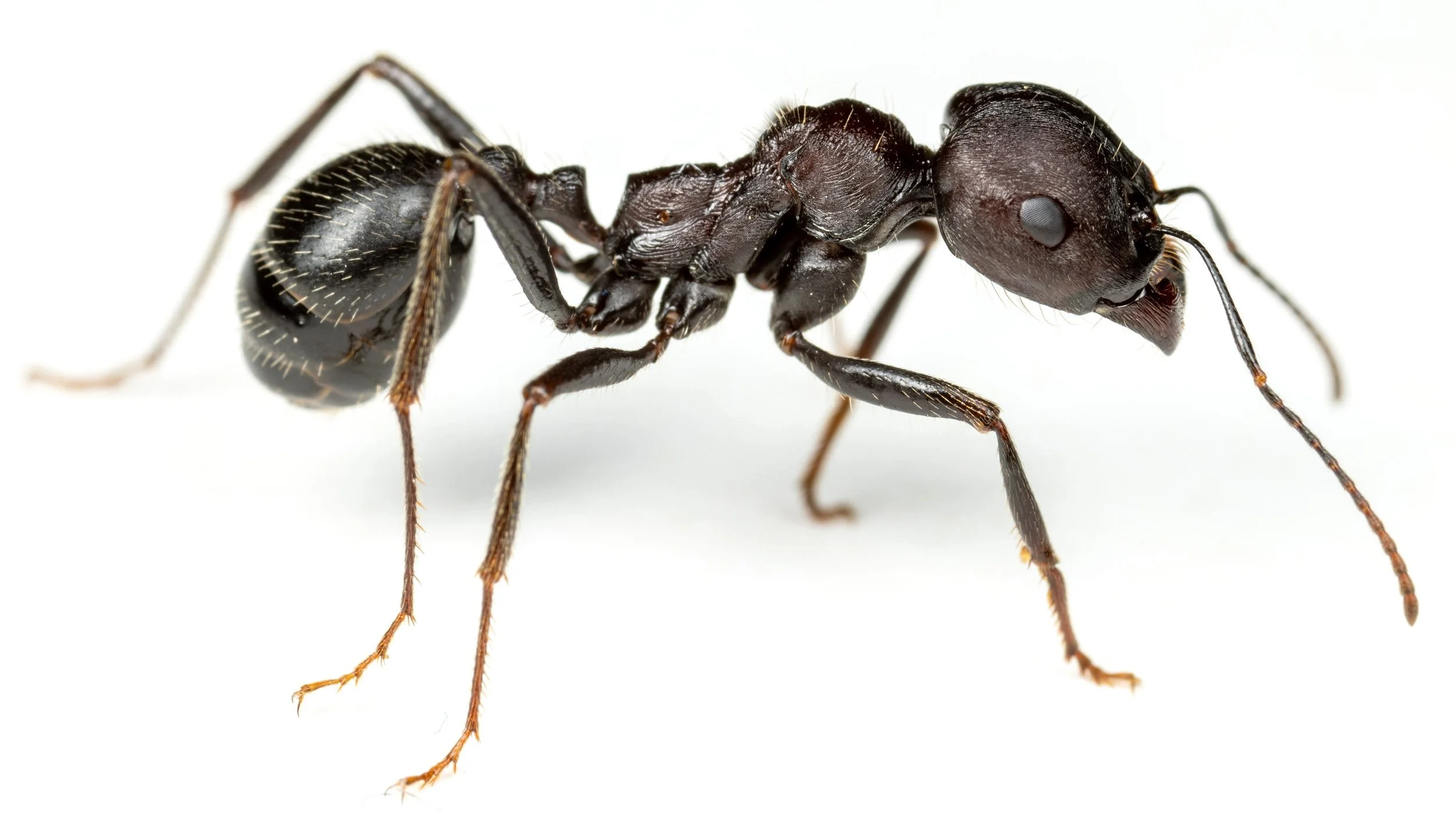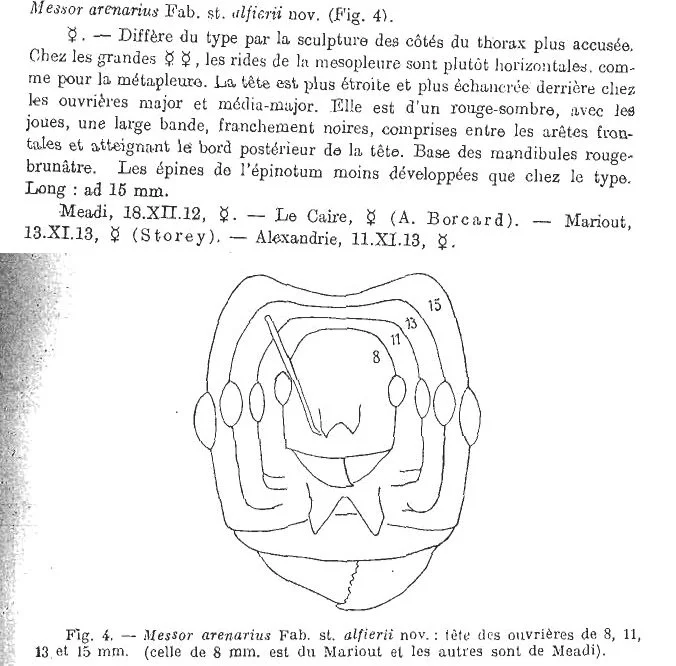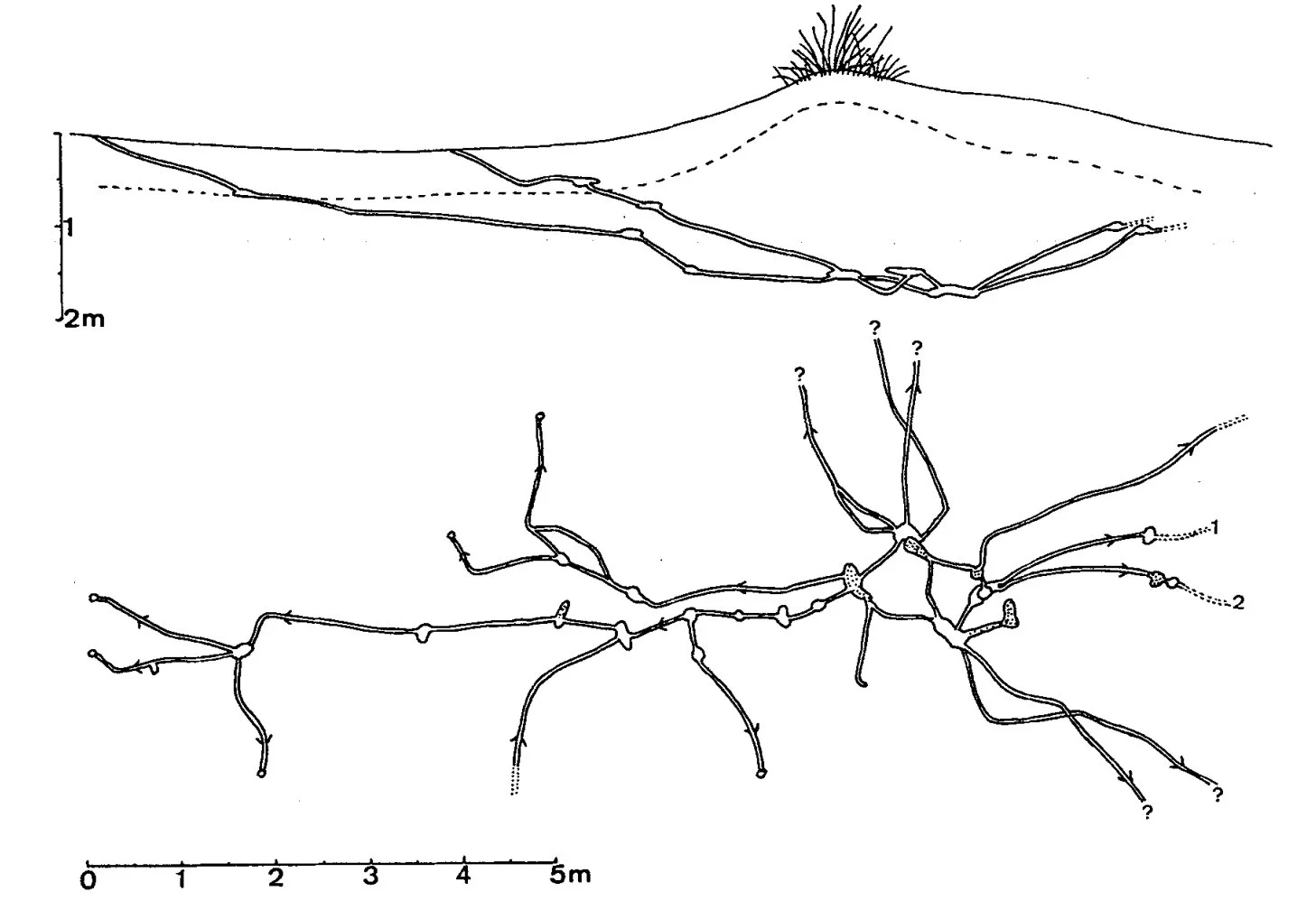Messor arenarius - Ecology
Formica arenaria, firstly described in 1787 by Fabricius, nowadays known as Messor Arenarius, or the Dune Harvester Ant.
Messor arenarius major worker
From the Latin Messor, meaning Harvester and Arenarius that translates as Sand.
It’s the second largest Messor species in the world after the very sought after Messor Cephalotes.
The Queens measures 20mm while the workers sizes vary from 5 to 18mm.
Messor arenarius Queen
These ants have a spectacular black matte coloration with orange/red hues for the recently ecloded majors and purple/wine hues for the older majors.
Freshly eclose Messor arenarius major worker
It is a species of ant belonging to the Myrmicinae subfamily and the Messor genus. It is comprised of 5 sub species (alfieri, arenarius, diabolus, ratus and thebaicus),
These ants in particular are commonly encountered in more arid habitats like semi-deserts and deserts. They can be found distributed across the northern part of Africa and into the Middle East to countries such as Morocco, Algeria, Libya, Egypt, Sudan Syria, Israel, Iran, Iraq and Saudi Arabia.
Messor arenarius - Antmaps.org
Most Messor are mostly polymorphic and Messor arenarius is no exception, and where polymorphism exists, a division of labor is normally also associated with it, either being foraging for food, defending the nest, storage food, caring for brood, and in the Messor case, chewing seeds.
Messor is a genus of primarily granivorous ants that play an important role especially in desert ecosystems. Harvester ants build large underground nests, where seeds and other plant materials are stored inside the nest chambers. Although the seeds are stored for later consumption by the ant colony, many end up germinating and this increases the desert vegetation cover, also increases humidity retention on the soil and so where there is water there is life.
In their natural habitat these ants undergo a rainy season from December to March, a seed ripening season from April to June and a dry season from July to November.
During the different seasons, they employ and adapt their foraging behavior accordingly and have been known to use two types of foraging strategies:
- a gregarious called foraging columns (directed towards food resources of high density called food patches) and another one
- solitary (directed to resources with a more scattered distribution or to find new patches).
Their recruitment which refers to the ability to initiate trail following, involves Dufour gland secretions and stridulations.
Messor arenarius uses both mentioned foraging strategies, and has been acknowledged to gather virtually all plant species within its foraging range, because relatively to other Messor species, their colonies don’t grow as large, having an estimated number of workers between 800 and 1500 individuals based on external foraging workers and internal workers correlations and an actual nest survey. Another study suggests maximum sizes of 5000 workers, but no measurement methods are provided.
Messor arenarius worker
Another study relating nest architecture types and colony size seems to point out that the first estimation is correct.
Their nest architecture was surveyed and described in 1971 as a numerous of inter-connected chambers.
Messor arenarius nest architecture
Reading from the paper: “The efficiency of the digging methods of Messor arenarius is attested by the length of its galleries. Unfortunately the extreme difficulty of following their tunnels and chambers due to the enormous amounts of sand that is necessary to be removed, makes it almost impossible to study a nest completely. And so I have only been able to do it once despite all my efforts. The nest I had uncovered extended over 10 square meters and reached 2 meters deep.
On the first 50 to 70 cm deep, the sand is dry and very loose, but after that, the existing humidity gives it a bit of cohesion.
The first few galleries, with only some workers inside, are narrow and fragile; the slope of the tunnels is always very smooth and long, sometimes over 10m long. Although it is not totally clear the reason for such architecture, it is very similar to other desert ant species nest architecture.
Nearing the 2 meter depth, the first granaries and brood chambers emerge.
The granaries filled with seeds depending on the time of season, and the brood chambers filled with larvae also unveiled some very small workers (only 5 or 6mm), workers which are never seen on the surface.
The nests of Messor arenarius are deep and very humid in the inner chambers and tunnels, a fact that helps limit the risk of chamber collapse
During the excavation of the nest, coming from the depths underground, each worker appears on the surface carrying between its mandibles, a more or less voluminous dumpling of agglomerated sand. These sand balls are made with the usage of their mandibles, their specialized beards and their forelegs.
Messor arenarius in natural habitat.
Video by antdealer.com
After a few days, the accumulation of sand balls forms a concentric mound around the opening of the nest. Often this rubble takes the form of a disgusted volcanic crater, the highest wall of which is on the side of the prevailing wind.
I hope you have enjoyed this little research I did on Messor arenarius with the available published information collected. I do these as my learning approach and now share with you all, in hopes that it helps to save some of your time. Let me know if you have any questions, and see you on the next one. Thank you for taking the time to read.










